Reto Pano Film Point-and-Shoot Review: C I N E M A T I C
![]()
In May, vintage-inspired analog camera company Reto announced the Reto Pano, a reusable point-and-shoot camera with both an ultra-wide lens and the promise of being able to switch freely between standard 35mm film aspect ratio and panoramic mid-roll. It got my attention.
The idea behind the Reto Pano is immediately enticing. I have been seeking an affordable and enjoyable way to capture ultra-wide panoramic film photos so that I can mimic the experience I’ve seen from my friend David Imel. It’s difficult to find a dedicated panoramic film camera in good condition, and when you do, it’s usually extremely expensive. Given that the Reto Pano is just $35, I didn’t expect it to blow me away with its build quality or even give me a fantastically sharp image, but I thought it might be an affordable way to scratch this itch.
![]()
After my time with it, I have to say that it doesn’t fully do that. However, what started out as deep disappointment eventually mellowed out, and I find myself mildly pleased with it in the end.
Reto Pano 35mm Film Camera Review: Design and Build Quality
Based on the marketing, I assumed that the Reto Pano was going to use some kind of internal switch that would move around sliding masks to hide or reveal more of the film roll to give you either a standard 3:2 photo or an ultra wide 2.7:1 aspect ratio — or at least something similar. Essentially, I was hoping for a cheaper but similar mechanism to the one found in the Hasselblad X-Pan or Fujifilm TX-1.
Sadly, that isn’t what Reto did here. Yes, the camera uses masks, but in a far less impressive manner. Rather than revealing the lens to more or less of the whole film strip, the Reto Pano either allows light to hit a full 3:2 area of the roll or masks on the top and bottom of the frame can move down, blocking light from hitting that area and only showing the middle of the strip. So rather than making a panoramic photo show more, it actually exposes for a little more than half of the total space a typical photo would.
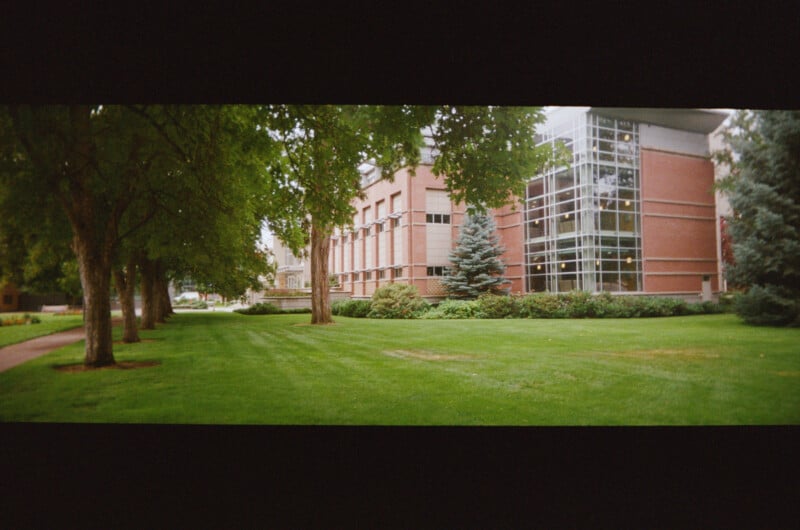
To get the “cinematic” look, you have to be okay with purposely using less film, even though the film roll and developing costs the same amount regardless. When I first opened the box to take a look at the internals, my heart sank. Sure, it would have required a lot more tooling to give us true ultra-wide photos on 35mm film, but this solution feels pretty underwhelming.
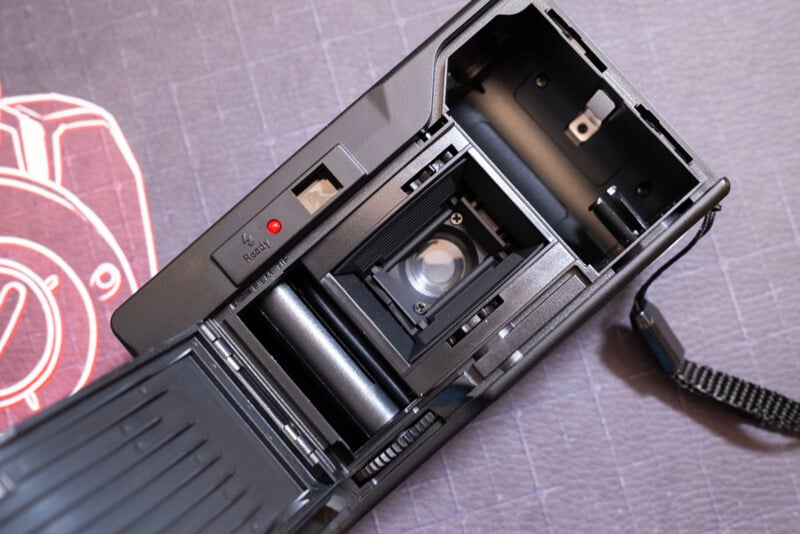
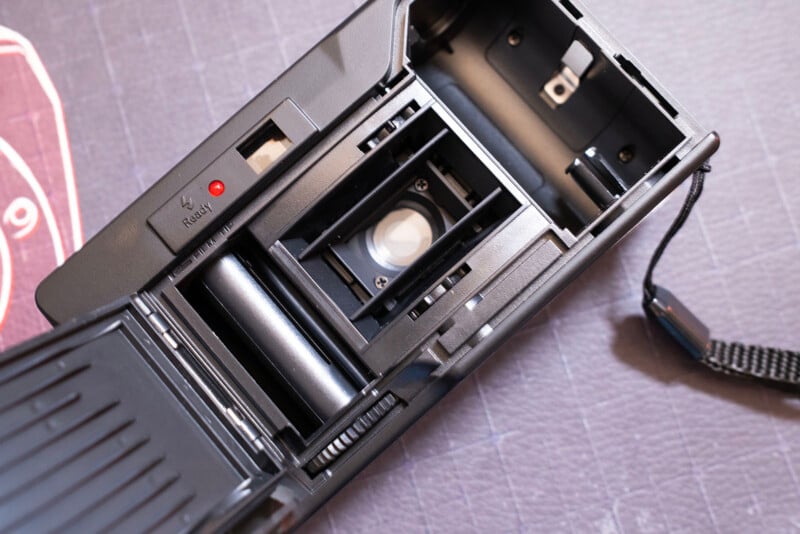
The build quality is pretty much what you would expect for $35. The entire construction is a super lightweight plastic with a few exceptions, like a bit of metal in the hinge and, of course, in the screws holding it all together. The lens is plastic, which is to be expected, and none of it feels particularly robust. It scuffs easily, too: I haven’t asked this camera to do much since I’ve had it, and it has a few unsightly marks around the bottom.
![]()
The shutter mechanism is entirely mechanical, so while the Reto Pano does take a single AAA battery, that is specifically to power the flash (which can be toggled on and off). The shutter mechanism is laughably cheap-feeling, and the sound it makes when the shutter is fired is several stages less satisfying than clicking a pen. The ratcheting wheel used to advance to the next frame is right in line with classic disposable cameras, though I wish it were located in a different spot. Reto opted to put it in the lower left-hand corner of the camera body, which means the Reto Pano always requires two hands to operate it. I prefer being able to whip the camera out, fire a shot, and wind it with one hand, and that just isn’t possible with this design.
![]()
The flash is, gratefully, a classic electronic style and not an LED, so you do get that distinctive 1990s look to photos, which is absolutely a vibe, and I’m here for it. It is enabled via a switch below the front element, which is either closed (which prevents the shutter from depressing by accident), open, or open and with a flash. You do have to wait a few seconds for it to charge, and you can hear it spooling up, which is just a wonderful hit of nostalgia.
![]()
The only other switch on this camera is on the top of the body above the shutter button, and that is what you use to swap between standard and “panoramic.” When you shift the switch to the right, it moves two fins on the inside above and below the center of the frame into position so that light from the lens only hits the center third of the film strip. At the same time, it pushes two black bars into the rangefinder to simulate what will be captured on film.
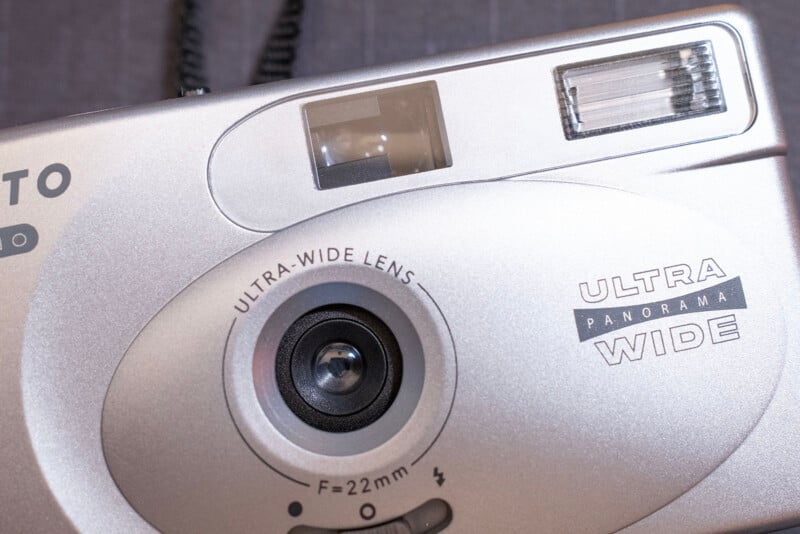
It’s extremely basic, but it works.
Reto Pano 35mm Film Camera Review: In Use
Other than the extremely chintzy-sounding shutter mechanism and the awkward location of the film advance winder, the Reto Pano is pretty fun to shoot with. It’s a nice and compact camera, so I was able to easily take it with me without needing a bag: it fits into a pants pocket. It ships with a wrist strap, which I dutifully attached to the body, but I don’t really use it, since it’s so light I am not really afraid of dropping it. That said, I bet it would immediately shatter if I did.
For this review, I loaded it with the AAA battery and a roll of Kodak Gold 200. On that note, Reto Pano doesn’t really say what film speed you should be using with this on its product page, but buried instructions say that you can put ISO 100, 200, or 400 in it depending on what lighting conditions you’re expecting. Given this is locked at f/9.5 and a 1/100 second shutter speed, if you’re using this anywhere other than in bright daylight, you probably want to have ISO 400 loaded and that flash perpetually on. I mainly shot without the flash, and my photos all were exposed pretty nicely, so ISO 200 seems to be the ticket.
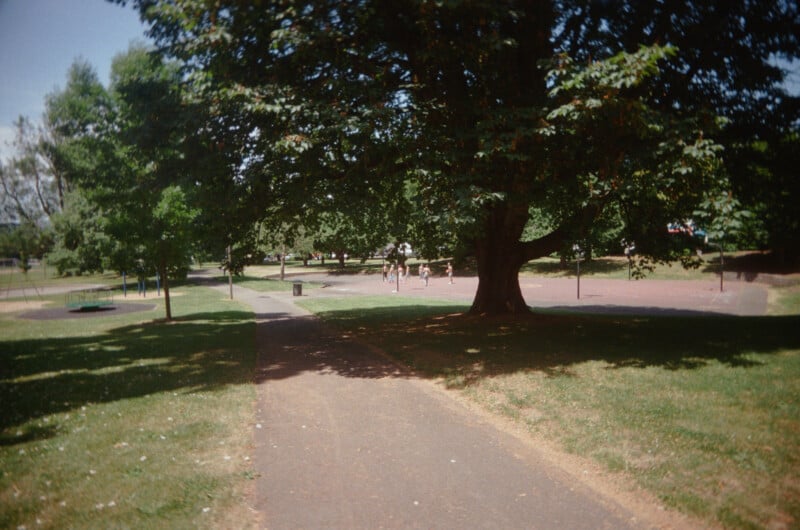

Photos look pretty much exactly like what you would expect out of a classic disposable. The lens is not particularly sharp; it doesn’t reject flare well at all, and thanks to that tight aperture, basically everything is always in focus. There is also some vignetting you’ll likely notice on the sides of the frame, which is likely due to the fact that this lens is just so wide: it’s 22mm.
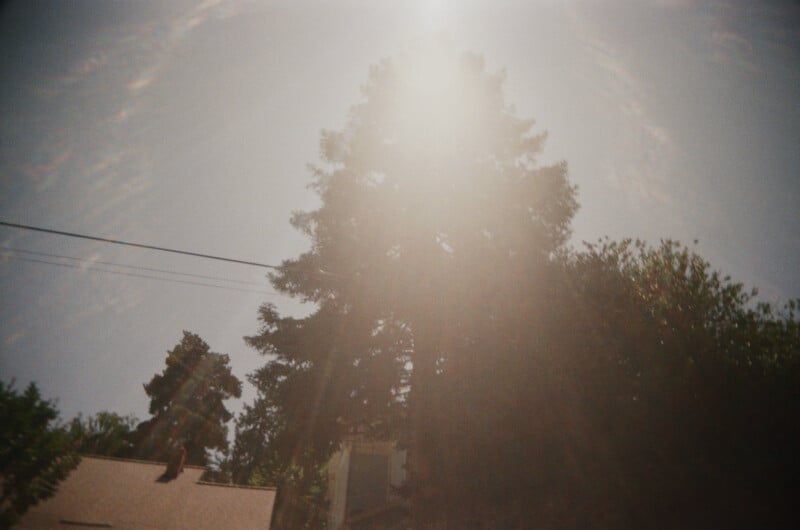
![]()
I think it’s probably too wide if you plan to only use this in its full frame mode, but that width makes the “panoramic” look pretty awesome. Like I mentioned, you will have to come to terms with the fact that you’re literally throwing away film when you use this mode, but the results do in fact look like they were taken with a panoramic camera. Let’s call it “imitation panoramic,” and that has its own charm that’s worth praising.
![]()
Because let’s be real: we’re just cropping. You could absolutely achieve this same result by scanning the photos and cropping them in Photoshop or flagging your prints in the darkroom, and you wouldn’t have to make the choice to throw away areas of the exposure at the time of capture.
![]()
With that said, it’s not fair to judge a camera like this entirely this way. Cameras like this are meant to be fun, and so we have to give equal or perhaps greater opportunities to the experience of using the Reto Pano.

![]()
One thing I didn’t like about the Reto Pano is that the little flags that restrict the light don’t give a totally straight line across the top and bottom. The field of view curves slightly in the corners, meaning if you want a perfect panoramic with straight lines, you end up having to crop in just a little bit more, which means throwing away even more of the frame. This is an annoyance, but it doesn’t make me feel like what the Reto Pano is doing isn’t worth it. It’s a cheap, plastic-y little camera; of course it’s not going to get things perfectly straight.
![]()
As I said, this is an enjoyable camera to use, and I really enjoyed the physical changes to the rangefinder point of view when you flip that panoramic switch. Literally seeing the world in widescreen and knowing that was what I was getting on film did change how I captured scenes. I chose to frame things differently, and I had fun with it. Conversely, if I just wanted a disposable camera experience, I could just flip that switch back and immediately transport myself back to 1995. For $35, it’s a cute, effective little gimmick.
The Reto Pano is Cinematic Fun
The Reto Pano is definitely not for everyone. It may physically pain someone to willingly throw away usable space on a roll of film, given the cost of film and developing, and I completely get that. However, if you’re willing to load this little camera with some cheap film and just let yourself have some fun, the Reto Pano is what it advertises.
About a month ago, my friend Becca Farsace published a video where she argued that a cheap, fixed-lens, reusable film camera is not only worth using, but it’s her favorite camera of all time. They let you capture memories without taking you out of the moment and getting too caught up in the details.
“You could do all of that with a digital point-and-shoot camera, sure, but often when you’re attempting to document a moment with them, you are inevitably taken out of it. Whether it’s the focus not grabbing the right part of the frame, the endlessly looking back at what you shot in the attempt to get the perfect shot, or something as simple as a battery dying, there are a lot of technical parts to the process that slow you down,” Becca argues. “It’s moments like these that always lead me back to a camera like this.”
I agree wholeheartedly, and the benefit of the Reto Pano is that you get all of what Becca believes is important, with the added fun of a different aspect ratio. I think that’s worth celebrating, even if it means a little bit of waste.
![]()
Are There Alternatives?
There are seemingly endless options for film point-and-shoot cameras. The Ilford Sprite, the Kodak Ektar H35 half frame, and the Dubblefilm Show are just three examples I can point to. What makes the Reto Pano special, though, is that cinematic gimmick, and there it stands out.
Should You Buy It?
Yes — with a caveat. I don’t think this camera is for everyone, but if you were already in the market for a point-and-shoot film camera, the Reto Pano should most certainly be on your short list.